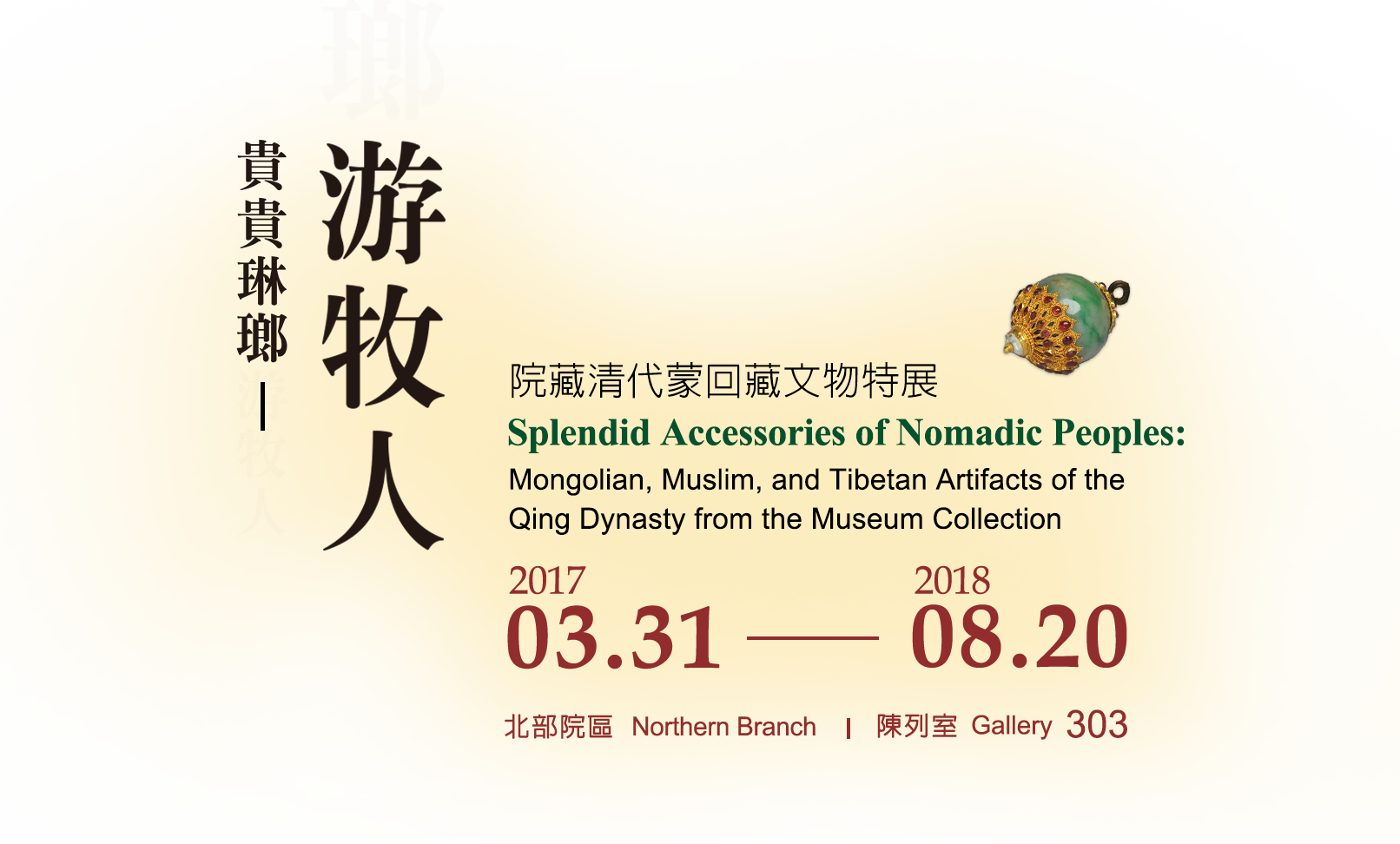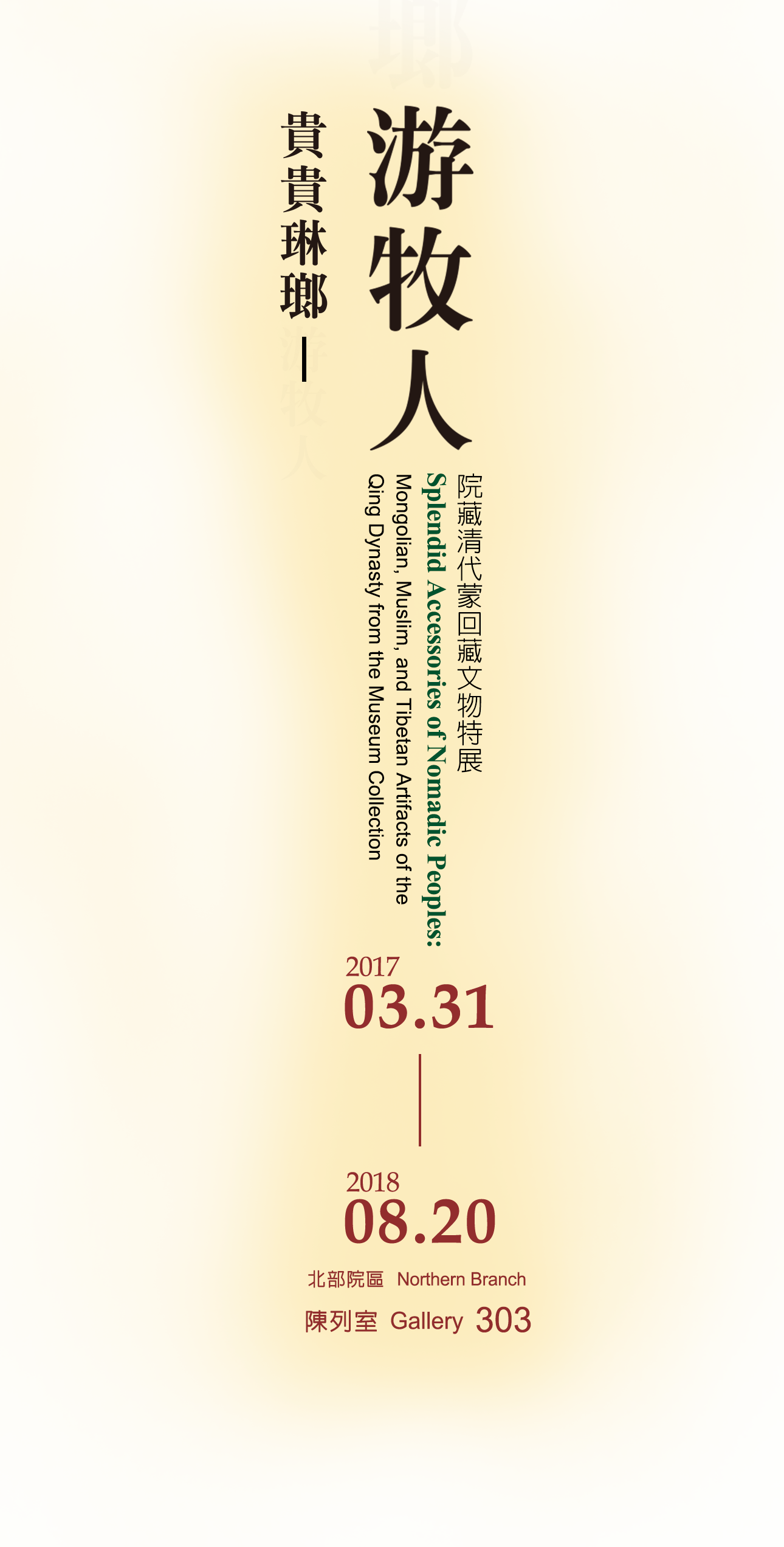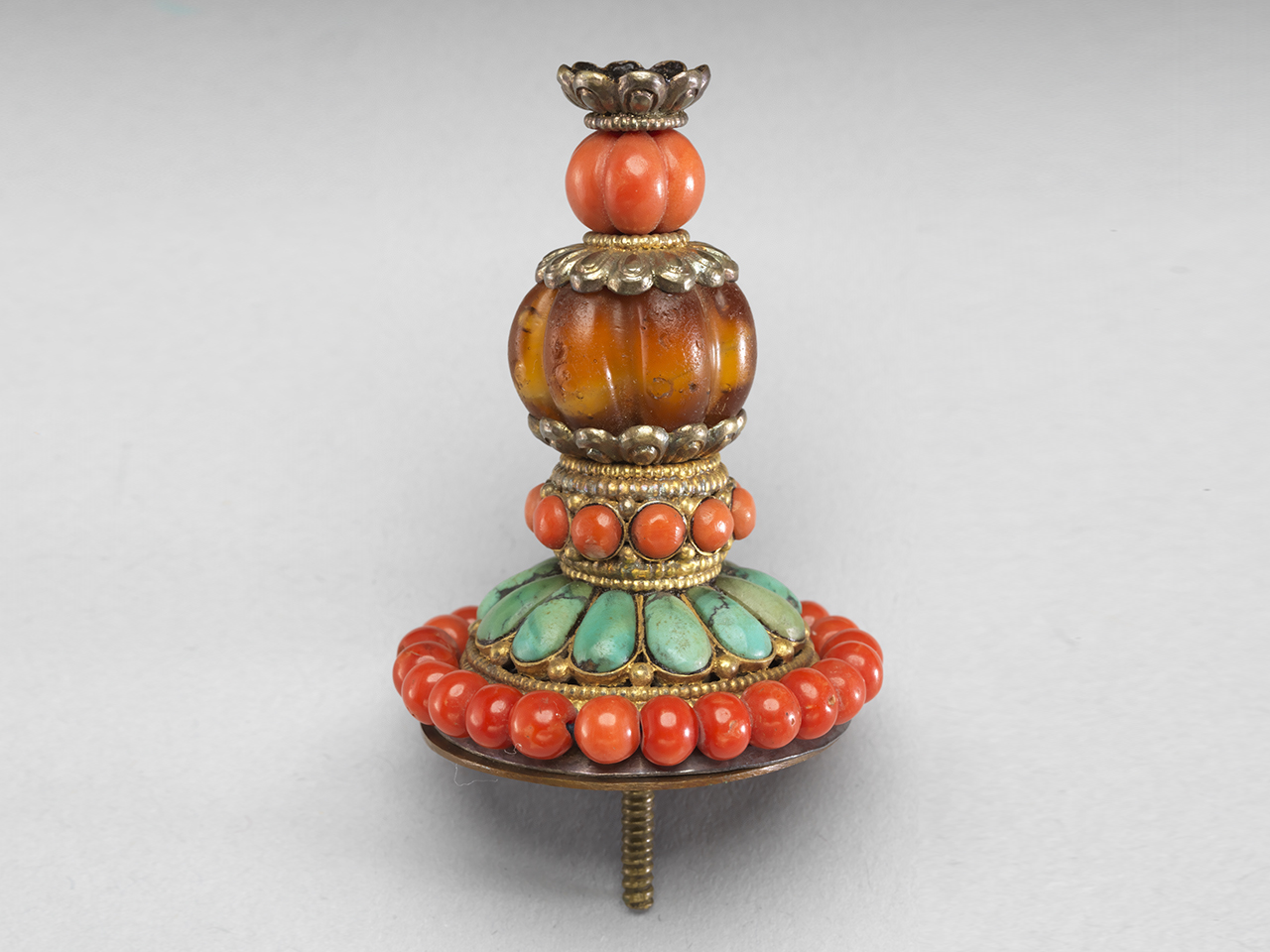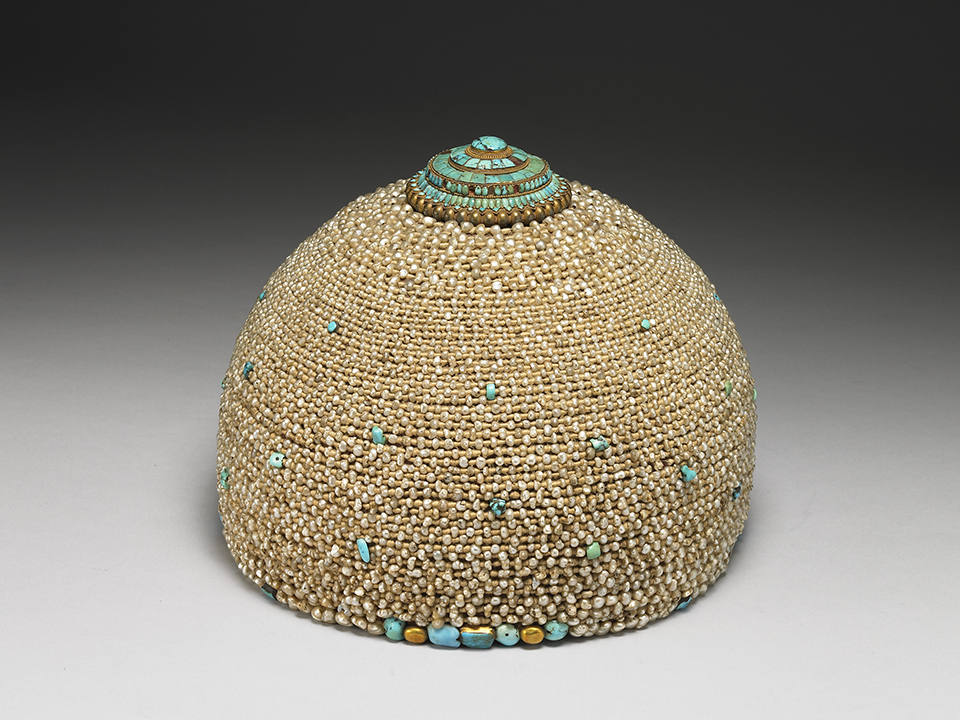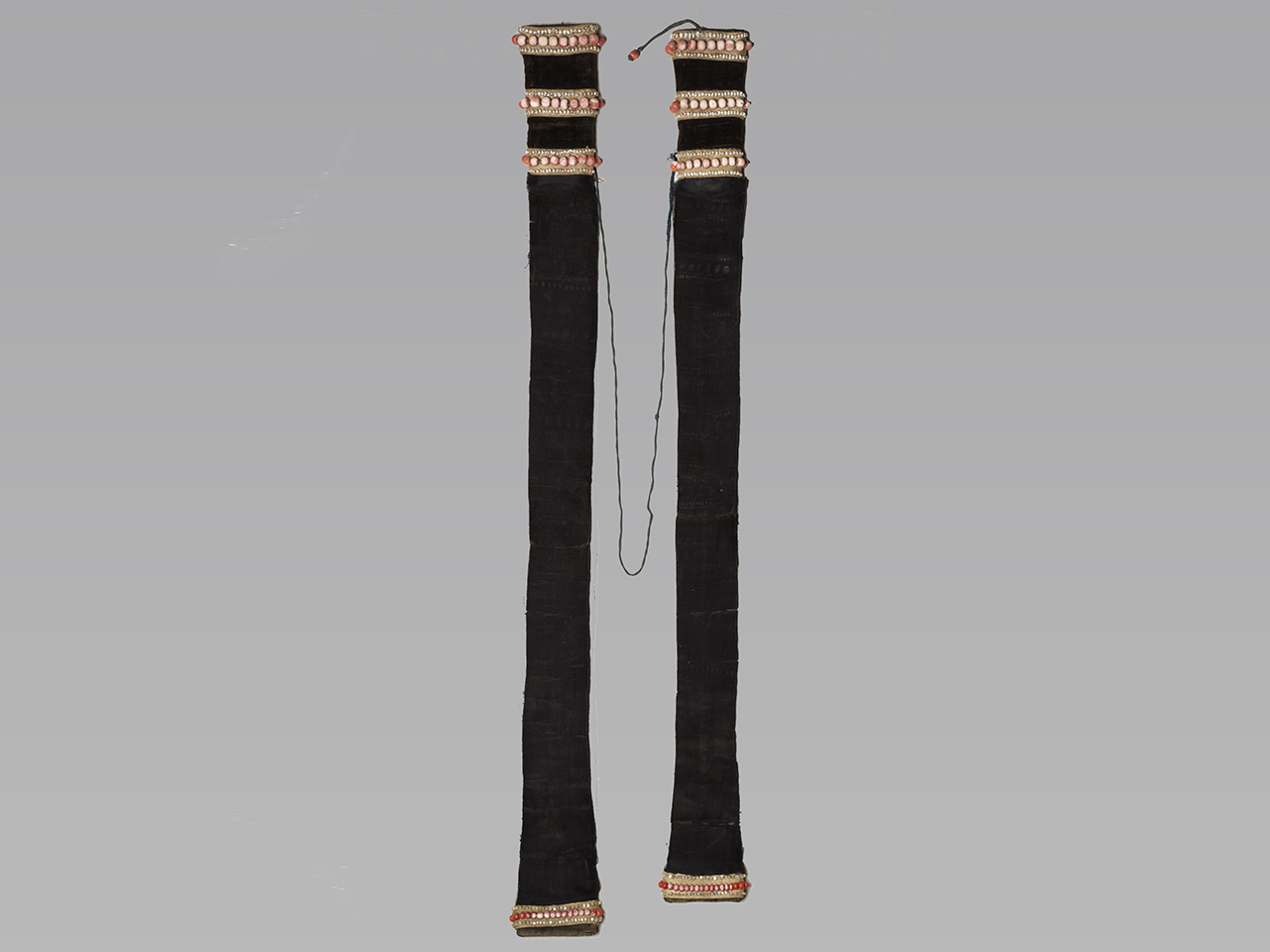Coral and turquoise are products of nature that have long been appreciated by Mongolian and Tibetan peoples, who used these precious materials as inlay on gold and silver wares or to complement pearls and amber for colorful and magnificent forms of personal ornamentation. For important ceremonial occasions, such jewelry was adorned in layers, creating a unique aesthetic trait in the culture of these nomadic peoples. Their coral was sourced from the Mediterranean Sea and the turquoise mined in Iran. Of significant value, these materials came to signify the status and economic clout of the person wearing them. Rare and semi-precious gems of coral, crystal, and clamshell not only were concrete symbols of Buddhism most excellent, the native Tibetan religion of Bon, with its reverence for nature, came to imbue them with protective powers as well. Thus, personal ornaments decorated with these gems served as symbols of auspiciousness, good fortune, and social status, becoming a unique image of beauty of the Mongolian and Tibetan peoples.
Silver hat finial with coral and turquoise inlay
- Qing dynasty,18th c.
- Tibetan work
In Tibet, both men and women prefer wearing gemstones as personal accessories. The most common materials used to make such gemstones are corals, turquoise, and beeswax. Most of the corals in Tibet come from the Mediterranean Sea, the corals of which come from regions such as India and Kashmir. Tibet produces some of its turquoise; however, such turquoise is relatively greener in color and features brown patterns. The silver hat finial with coral and turquoise inlay presented here is relatively greener in color; thus, it may have been fabricated using local Tibet turquoise. Hat top accessories generally reflect social status. The hat top of the artifact exhibited here is made of partially gold-plated silver. The uppermost gemstone was lost, and coral beads are found between the turquoise and the beeswax. The bottommost layer contains petal-shaped turquoise surrounded by a circle of coral beads. Regarding the silver stand in the middle, it contains beeswax-made, melon-shaped beads at the top. The said beads are accentuated by coral beads of all sizes above and below them. The base of the artifact was hammered to create the desired shape, in which hammer marks are faintly discernible. The gilt is light in color and the bottom of the artifact is equipped with a screw-shaped lock presumably used to enable users to secure the artifact to hats. This artifact is simple and plain and is the work of local Tibetan artists.
Pearl hat with turquoise inlay
- Qing dynasty, 18th c.
- Tibetan work
During the Qing dynasty, Tibetan aristocrats had been conferred the titles of duke, jasagh, and taiji; such titles were subsequently incorporated into the Qing court's administrative system. Aristocrats of different social statuses and/or from different regions wore different hats. During festivals, female aristocrats in the Lhasa region wore pearl or coral caps. The said caps feature a triangular base that is covered with pulu on the first layer and stone beads on the second layer. Aristocrats of even higher social statuses wore pearl hats on top of the caps. The hats are made of wood and covered with layers of small connected pearls as well as scattered turquoise, the last of which is used as an embellishment. The top of the hats contains decorated turquoise with gold inlay, whereas the inside of the hats is coated with red paint, making the hats heavy and gorgeous. In addition to wearing pearl caps and accessories, the aristocrats regularly wear large turquoise earrings joined with their braids in front of their ears. Furthermore, they wear ga'u (a Buddhist container) in front of their chest together with strings of pearl ornaments, allowing them to exude a sense of Tibetan-styled prestige, elegance, and beauty.
Black velvet hair cuffs with coral and pearl inlay
- Qing dynasty,18th c.
- Mongolian work
These braid covers, referred to by the Qing court as "black velvet hair cuffs," are cylindrical in shape and can be used to encapsulate hair. To hold the tubes up, leather is inserted into the two ends of the tubes as support. Outside, coral beads are arranged into ring-shaped ribbons. The artifact was identified by the researchers of the National Museum of Mongolia as a device used by Torghut women. The velvet hair cuffs are made in black because black is a symbol of good luck for the Torghut people. Mongolian braid ornaments and hats are remarkably unique, the most well-known of which is the twin high-arched, cow horn-shaped braids worn by Khalkha women. Such braids are decorated with various hairpins, whereas those that lie on the shoulders are adorned with gemstone-made cuffs. At present, hair cuff outer layer restoration involves adding a layer of protective crepeline, which is a type of markedly fine silk commonly used in the preservation and restoration of fabrics. The National Palace Museum's restoration department has exerted a great deal of effort to restore the velvet cuffs, in which black crepeline was selected for the black velvets before sewing it into cuffs. The cuffs are subsequently utilized to encapsulate the velvets for protection and support.
